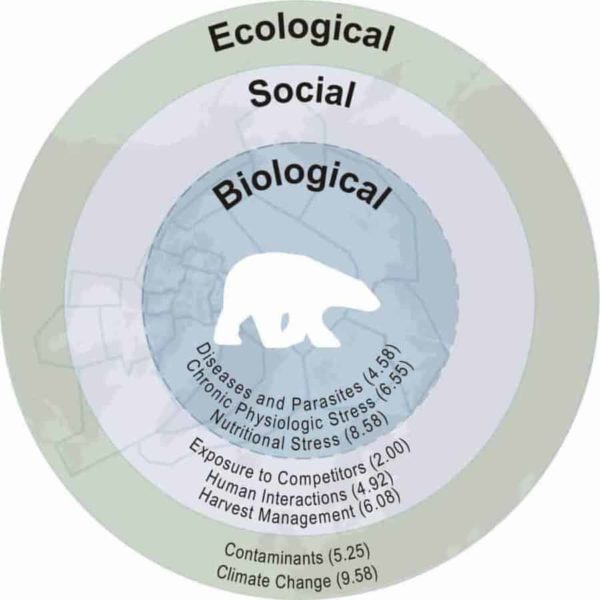The polar bear (Ursus maritimus), one of the largest carnivorous mammals on Earth, is being made vulnerable by the series of dangers it faces. An international team has established a guide to evaluate the condition of its health and although the polar bear’s biggest threat is climate change, plastic pollution and environmental contaminants in its habitat are starting to affect its endocrine system and reproduction.
Climate change is undoubtedly the main threat to polar bears (Ursus maritimus). They also suffer from nutritional stress, reduction of polar ice, human contact and diseases and parasites. But that’s not all.
“The health of the arctic polar bear is being attacked from all fronts, but among many other factors is the exposure to environmental contaminants,” María Jesús Obregón explains to SINC. Obregón is a research professor at the Biomedical Research Institute (a CSIC/Madrid Autonomous University centre) and one of the authors of the study published in ‘Environmental Research‘.
The study, led by Norwegian scientists, stresses that plastic pollution and environmental contaminants are affecting the endocrine system and the reproductive system of this mammal. “This is especially significant in this endangered species,” adds Obregón.
The researchers focused on the exposure of the arctic polar bear that lives in Greenland to growing levels of environmental contaminants. “A wide variety of organochlorine compounds and pesticides have an effect on the thyroid hormones in plasma, tissues and deiodinase enzymes, which are in charge of stabilising the thyroid hormones in tissues,” explains the expert.
The study analysed more than 50 organohalogen contaminants and their metabolites in bear plasma and tissue, compared with the aforementioned thyroid parameters in the liver, muscle and kidney of seven adult bears. Previous studies had already demonstrated the relationship between the presence of contaminants and the altered plasmatic levels of the thyroid hormones in the arctic wildlife, but it is the first time that they have been linked to tissue alteration.
A guide to monitor bear health
Concerned about the loss of habitat ice for the polar bear, which is becoming increasingly threatened, the international team of scientists has created a guide to monitor the health of this great carnivore. The study, published in ‘Science of the Total Environment’, gathers 15 measures which allow the factors facilitating its conservation in the Arctic Circle to be determined.
The aim of the researchers is to establish complete monitoring programmes which include the health condition of the polar bears as a priority. “Environmental changes, especially loss of habitat ice, have triggered concerns for the health of this mammal. For this reason, the effective and consistent monitoring of its health needs to be unequivocally defined,” the study warns.
The scientists used the Delphi method, a questionnaire with the opinions and experience of 13 specialists from four different countries, to propose a definition of polar bear health. The main threats identified are climate change, nutritional stress, chronic physiological stress, diseases and parasites, and increasing exposure to competitors. Exposure to contaminants is the third largest threat.
“We still don’t know to what extent environmental changes will affect polar bear health and therefore its conservation,” say the authors of the study. For this reason, the guide will be a starting place to contextualise the health of the mammal and act in a context of environmental change.


